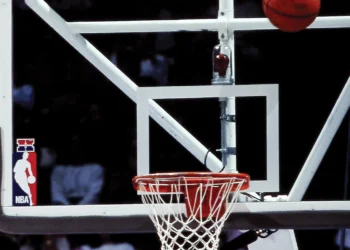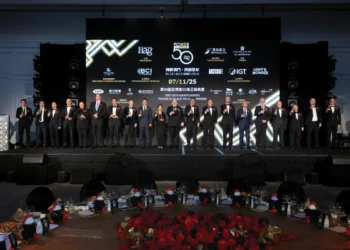Electronic tables don’t lie or make mistakes when it comes to calculating a player’s chances, says Weike
The tide of history and consumer opinion is on the side of electronic tables when it comes to player value, says David Kinsman, Chief Executive Officer of the gaming manufacturer Weike Gaming Technology.
No shopper would ask his local grocer to go back to old-fashioned mechanical scales when the grocer has electronic ones giving a super precise reading down to a tiny fraction of a gram. The same principle applies in the calculation of player odds in a table game, says Mr Kinsman.
“Electronic gaming has a direct benefit for players because it gives them the real, true, odds of the game,” explains Mr Kinsman.
“An electronic baccarat table runs at 1.8% [house advantage]. A live baccarat table in Macau runs at up to 3%. Where’s the player better off? The players will realise that very quickly. They’re not stupid. Those [operators] who think they are will go broke,” he asserts.
Win-win
On the face of it, an electronic gaming system that yields on occasions an extra 1.2% house edge to the player compared to the average live dealer version, doesn’t sound like a natural winner with casino managements. Mr Kinsman stresses, however, it’s a win-win situation for player and house.
“At the mass gaming end [of the market], live table utilisation might only be four to six hours a day, but operators still have to staff those live tables,” he says.
“They would be better off having some electronic tables around.”
Weike’s range of high-tech tables—marketed under the branding Multi-player Electronic Table Games (METG)—includes four-, five- and ten-player versions that are all SAS 6.02 compatible. The latter two configurations are also already approved to GLI-11 standards. At G2E Asia 2009, the company showed off a multi-purpose METG capable of offering fully automatic or attendant supervised table gaming.
Niche
“The product we’ve designed is basically a gap product,” states Mr Kinsman.
“It will sit between a slot and a live table, because it can be assisted by a staff member—not a dealer necessarily. You don’t need to have an expensive dealer. You can have a slot machine attendant. Technically it’s classified as a slot product.
“We know from discussions with other regulators in other parts of Asia [outside Macau], that they have no problem with classifying our table, which has an attendant who serves drinks, etc., but doesn’t directly control the game, as a slot product.
“Regulators want to see a control procedure document that clearly sets out what the person [attendant] does. Even without that, there will be a place on the floor for good income from these types of products. If a casino ignores these products, they do so at their own peril. It’s not a question of going the other way and forgetting the high rollers.
Approval
“We’re in negotiations with a number of regulators for approval as a dual product—where the table operates in two modes—in an automatic mode during the quiet periods of the day, and in the heavy periods of the day when you want to push the play, it operates with an attendant. The attendant’s job is only to control the speed of the game,” says Mr Kinsman.
“A baccarat table, if operated automatically, is around US$175,000 cheaper a year to run than a live table,” he adds.
“In the first year an electronic table might typically be only 38% cheaper to run than a live table because of the initial capital outlay. In the second year, though, it’s about 90% cheaper.
“In the case of our table you might typically spread the capital cost over five years as the life of the product is significant,” states Mr Kinsman.
“If you do it over five years, in the first year it’s going to be US$150,000—net—cheaper to run than a live table. It’s a multi-game system and we’re continually developing new products. It’s a SAS 6 table capable of talking to all monitoring systems and it connects to all networks, etc.”
































